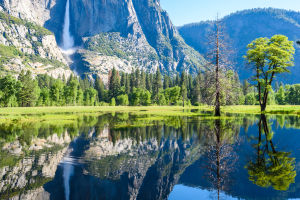High-altitude natural landscapes are some of the most breathtaking and awe-inspiring sights on our planet.
These landscapes are defined as those that exist at elevations of 3,000 meters (9,800 feet) or higher above sea level. They are characterized by their unique geology, climate, and ecology, which have all been shaped by the extreme conditions found at these heights. In this article, we will explore some of the key features of high-altitude natural landscapes and what makes them so remarkable.
One of the most striking aspects of high-altitude natural landscapes is their geology. At these elevations, the earth's crust is subject to immense pressure and stress, resulting in the formation of unique landforms such as jagged peaks, deep valleys, and steep cliffs. These landscapes are often created by the movement of tectonic plates and the forces of erosion, which carve out these dramatic features over time.
Another defining feature of high-altitude natural landscapes is their climate. At these elevations, temperatures can be extreme, with freezing temperatures and snowfall common year-round. The air is also thin, which can make breathing more difficult and can lead to altitude sickness for those who are not acclimatized to the conditions.
Despite these challenges, high-altitude landscapes are also known for their clear skies and bright, sunny days, which provide stunning views of the surrounding scenery.
The ecology of high-altitude landscapes is also unique. These environments are home to a variety of specialized species that have adapted to survive in the extreme conditions found at these elevations. Some of the most iconic high-altitude animals include mountain goats, pikas, and snow leopards. These species have evolved to cope with the cold, thin air, and limited food and water resources found at these heights.
In addition to their ecological importance, high-altitude natural landscapes also have cultural significance. Many of the world's most famous mountain ranges, such as the Himalayas and the Andes, have long been revered as sacred places by the people who live in their shadows.
One of the most famous examples of the cultural significance of high-altitude landscapes is Mount Everest, the world's highest peak. Climbing to the summit of Everest has become one of the ultimate challenges for mountaineers, and the mountain has been the site of numerous expeditions over the years.
Despite the risks involved, thousands of people from all over the world attempt to climb Everest each year, drawn by the allure of conquering one of the world's most iconic peaks.
High-altitude natural landscapes are also important for their role in regulating the global climate. These environments are often home to glaciers and snowfields, which act as important reservoirs of fresh water. As temperatures rise due to climate change, these glaciers and snowfields are melting at an alarming rate, contributing to rising sea levels and other environmental problems.
Despite the challenges and risks involved, high-altitude natural landscapes remain some of the most spectacular and awe-inspiring sights on our planet. Whether you are a mountaineer seeking to conquer the world's highest peaks or simply a nature lover seeking to experience the beauty of these unique environments, the high-altitude landscapes of the world offer something truly special.
From the jagged peaks of the Himalayas to the windswept plains of the Andes, these landscapes are a testament to the resilience and adaptability of life in some of the most extreme conditions on Earth.


